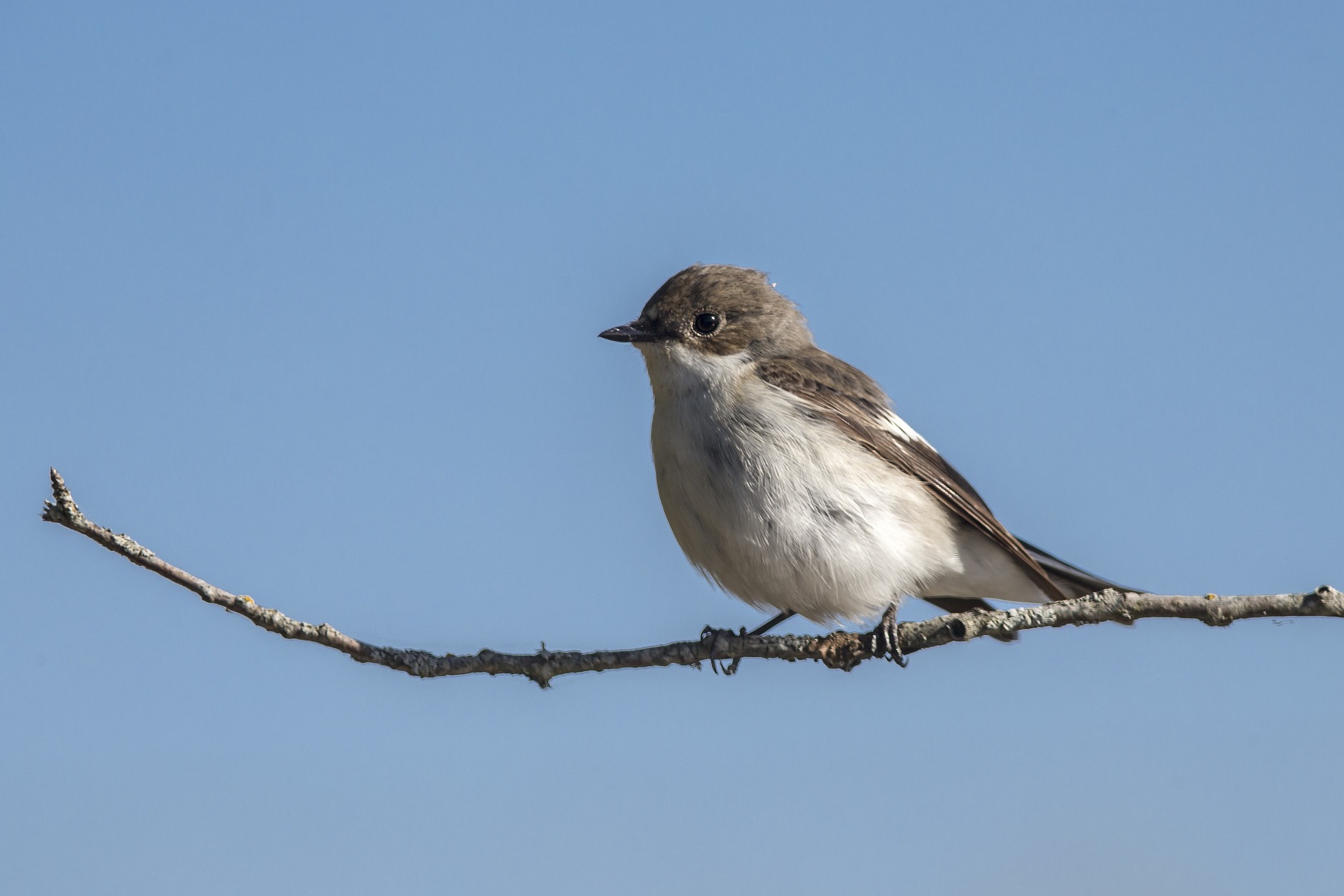The European Pied Flycatcher (Ficedula hypoleuca) is a small migratory bird belonging to the family Muscicapidae. Here are some key features and characteristics of the European Pied Flycatcher:
- Appearance: The European Pied Flycatcher is a striking bird with a contrasting black-and-white plumage pattern. Males have a black head, back, wings, and tail, with white underparts and a prominent white patch on the forehead. Females and juveniles are similar but with a more subdued coloration, often with brownish tones replacing the black.
- Distribution: European Pied Flycatchers breed across Europe and parts of western Asia, with their range extending from the British Isles and Scandinavia in the west to the Ural Mountains in the east. They migrate southward to wintering grounds in sub-Saharan Africa during the non-breeding season.
- Habitat: European Pied Flycatchers inhabit various forested habitats, including deciduous and mixed woodlands, as well as parks, gardens, and orchards. They are often associated with mature forests with abundant tree cavities for nesting.
- Diet: European Pied Flycatchers are insectivorous birds, feeding primarily on flying insects such as flies, moths, and beetles. They are skilled aerial hunters, catching insects on the wing using their agility and precision flight.
- Behavior: European Pied Flycatchers are known for their distinctive hunting behavior, perching on exposed branches or tree trunks and sallying out to catch passing insects. They may also hover briefly in the air before darting after prey. During the breeding season, males perform courtship displays to attract females, including singing from prominent perches and fluttering flights.
- Breeding: Breeding occurs from April to July, with males arriving on the breeding grounds first to establish territories and sing to attract mates. They build cup-shaped nests in tree cavities, nest boxes, or crevices, lining them with moss, leaves, and feathers. The female lays a clutch of 5 to 8 eggs, which she incubates for about 12 to 14 days. Both parents participate in feeding and caring for the chicks after they hatch.
- Conservation: European Pied Flycatchers are not considered globally threatened, although local populations may face threats from habitat loss, habitat fragmentation, and changes in land use. Conservation efforts aimed at preserving mature forests and providing suitable nesting sites, such as nest boxes, can benefit this species.
Overall, the European Pied Flycatcher is a charming and beloved bird species known for its striking appearance, agile hunting behavior, and melodic song, making it a favorite among birdwatchers and nature enthusiasts.
Views: 11
Subscribe to the newsletter:
